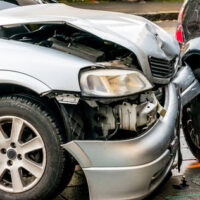When The Other Driver Fails To Tell The Truth About A Car Accident

A driver’s failure to be truthful when reporting the circumstances of a car accident to police, insurers, lawyers, or a jury is more common than most people think, with the at-fault party often fearful of the legal consequences, which range from accruing points on his or her license and having to pay increased insurance premiums to being held personally liable for the results of the crash. Fortunately, even if an at-fault driver tells a fictionalized account of what happened on the day of the accident, there are things that can help injured parties prove what actually occurred. An experienced Fort Lauderdale auto accident lawyer can, for instance, prove a case through expert witness opinions, eyewitness testimony, and evidence collected at the scene of the collision.
At-Fault Drivers Often Change Their Stories
It is not uncommon for an at-fault driver, immediately after a crash, to apologize to the other parties involved for his or her part in causing the accident. It is just as likely, however, that upon realizing the extent of the damage or injuries resulting from a crash, that an at-fault driver quickly changes his or her tune. Rather than admitting fault or explaining what actually led to an accident, an at-fault party who is eager to avoid liability may end up telling police a version of the facts that places the blame on someone else. In these cases, injured parties will need access to proof besides the other driver’s statements at the scene of the accident to demonstrate negligence.
Other Ways to Prove Negligence
Fortunately, even when at-fault drivers misrepresent the truth about what caused a crash, accident victims have other ways to prove fault, including:
- Putting the other driver on the stand and requiring him or her to testify under oath;
- Obtaining sworn testimony from eyewitnesses who saw the accident occur;
- Asking expert witnesses, including an accident reconstruction specialist, who can prove not only what happened on the date of the accident, but how the other driver was at fault through the use of accident scene evidence, such as skid mark measurements, the damage sustained by each vehicle, and where the cars came to rest;
- Obtaining video footage of the accident either from bystanders, nearby security cameras, traffic light cameras, or even dash-cams;
- Presenting medical records that are indicative of a certain kind of accident; and
- Collecting data from the vehicles’ on-board electronic systems, which often record how fast a driver was traveling prior to the accident and at what point he or she attempted to brake.
For help investigating the cause of your own accident, please reach out to our Fort Lauderdale office today.
Is the Cause of Your Car Crash Being Disputed?
Unfortunately, dishonesty on the part of a driver who caused a car accident is not uncommon. It is, however, possible to see past these falsehoods and prove what actually caused a crash. Please contact the dedicated Florida car accident lawyers at Boone & Davis by calling 954-566-9919 today to learn more.
Resource:
scholarlycommons.law.northwestern.edu/cgi/viewcontent.cgi?article=4577&context=jclc
